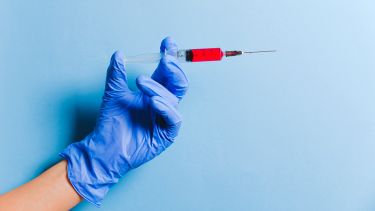Clinical trials are needed to ensure medical treatments available to the public are effective and safe, but it is a lengthy and expensive process. It can take up to ten years and cost around $1.3 billion to bring a new drug to market.
Researchers at the University of Sheffield are trying to find another way – through augmented clinical trials. This is where computer simulations are used alongside physical trials to reduce the amount of time spent testing treatments, the number of patients involved and, ultimately, the cost.
This work is a major pillar of STriTuVaD, a consortium coordinated by the pharmaceutical company Etna Biotech and focussed on developing vaccines for tuberculosis. The project includes collaborators from across Europe, including the University of Sheffield, where the principal investigator is Dr Miguel Juárez from the School of Mathematics and Statistics.
“Professor Marco Viceconti [University of Bologna, formerly University of Sheffield] and I had been discussing informally the use of simulations in medical settings for some time, mainly for very rare conditions,” Miguel said.
“It was when we were trying to put a research plan together, that we were contacted by Etna with a very similar idea, but in the context of tuberculosis, an endemic infectious disease.”
A commitment to humankind
STriTuVaD launched in 2018 by setting out a computer modelling framework for simulating the human immune system. Tuberculosis has given the researchers the opportunity to apply that framework to tackling an illness that is responsible for more than one million deaths every year.
“It’s a commitment to humankind,” said Epifanio Fichera, Project Manager at Etna Biotech and overall coordinator of the STriTuVaD project. “We don’t just see a business need, but the possibility to accelerate a treatment for a disease that affects a huge number of the world’s poorest people.”
Therapies for tuberculosis exist, but they can take a long time to be effective and are expensive to administer.. With one third of the world's population already carrying the infection, mostly in developing countries, the need for alternative treatments is urgent. But bringing new drugs to market would only take more time and more money, both of which are in short supply.
“If we can cut the amount of time needed to bring a drug to market, and if we can cut the cost of a single dose, we can make a vaccine that’s affordable for all of the people who need it,” Epifiano said.
This is where STriTuVaD’s Universal Immune System Simulator (UISS) for Tuberculosis comes in. Using a system developed by consortium member Professor Francesco Pappalardo at the University of Catania, researchers can gather data from a much smaller number of patients than would normally be needed for a full-scale clinical trial.
We don’t just see a business need, but the possibility to accelerate a treatment for a disease that affects a huge number of the world’s poorest people.
Epifanio Fichera
Project Manager, Etna Biotech
With this, it is possible to use statistical modelling to generate 'virtual patients' and predict their response to the therapy being tested. These predictions are combined with observations made on real patients using a new augmented clinical trial approach that applies principles from Bayesian statistics for a continuously refined dataset.
“UISS technologies have been used successfully in a number of different medical settings,” Miguel said. “In STriTuVaD, we have established its reliability for simulating the effect of therapeutic vaccination in tuberculosis patients, the so-called UISS-TB.
“Along with my postdoctoral research associate, Dimitris Kiagias, I lead the mathematical modelling that enables sharing information from the computer and physical patients into an augmented clinical trial.
“This entails measuring the compatibility of the simulation's output with the real data, in order to weigh its contribution to the combined experiment, while identifying and propagating the variability from both sources onto the assessment of the trial endpoints.
“We also contribute to establishing the credibility of UISS-TB as a valid medical technology by providing statistical measures of consistency of the simulated output and discrepancy measures between simulated and real data. One of our publications on this was recently featured on the cover of Journal of Biomedical and Health Informatics.”
On the radar – and into the future
STriTuVaD has been funded through the European Commission’s Horizon 2020 project and is one of very few Horizon 2020 projects to include a partner from outside Europe, the All Indian Institute of Medical Science.
As a sign of the consortium’s success, UISS-TB has now been included in the Commission’s Innovation Radar, which puts the spotlight on innovations and innovators in EU-funded projects with high potential.
Miguel said: “Adding UISS-TB to the radar means that the University of Sheffield has been identified as a key innovator in the field, raising its profile to encourage the development of a dynamic ecosystem of incubators, entrepreneurs, funding agencies and investors that can help get UISS-TB faster to market.”
“We hope at the end of this, that we haven’t just shown potential, but that we have developed a very important product that can help populations around the world affected by tuberculosis,” Epifanio added. “This is the future of vaccine development.”

